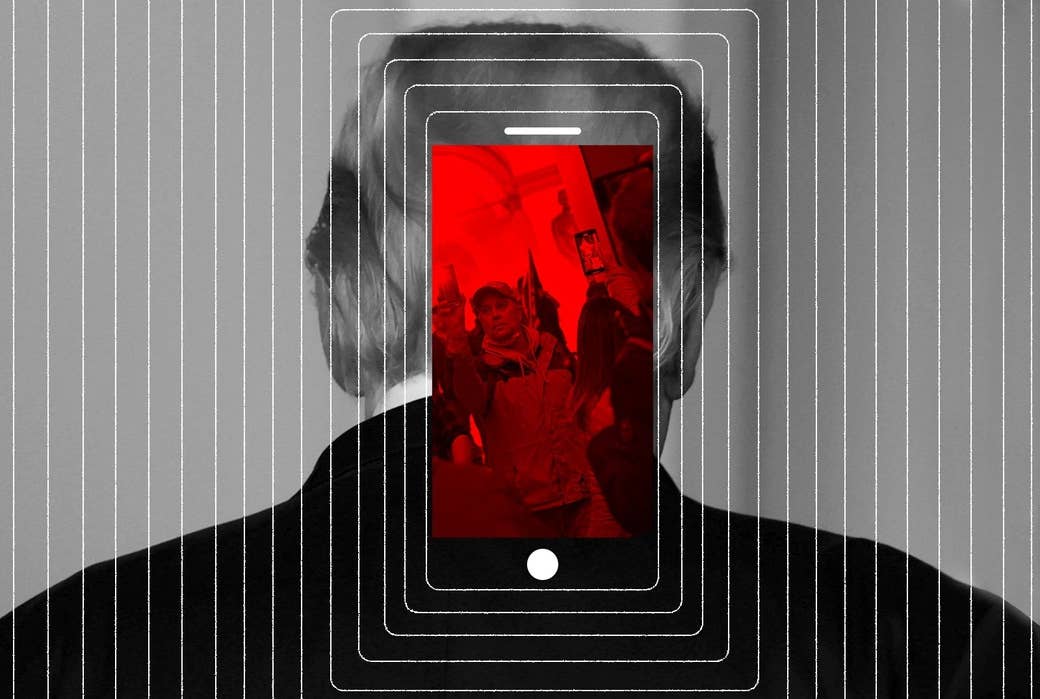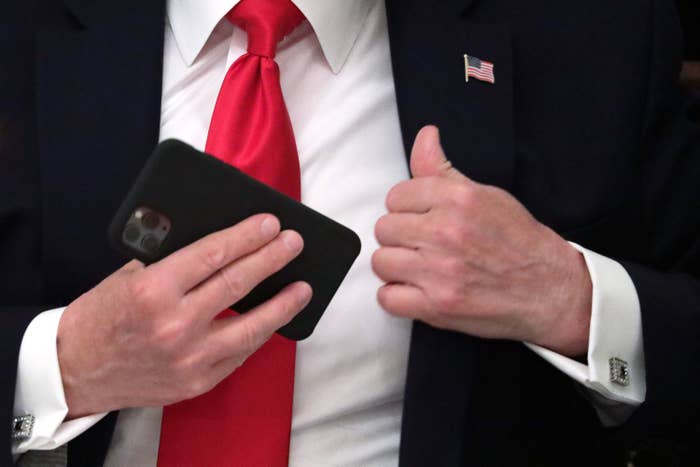
On a podcast, after the fact, Rep. Peter Meijer described in sequence what it was like inside the Capitol on Jan. 6. First, they were told to stay away from the windows, then told to stay inside the room. Then Nancy Pelosi recessed the chamber. The police asked them to stay in their seats. The police told them they were still trying to assess the situation. Then, the police made the announcement that there are people in the building. “They weren’t sure of how many,” he said, “but they went to kind of lock down the chambers, so all of these … outer doors start to slam shut.”
You can see the kind of doors he means, I think, if you watch one of those videos that had been uploaded to Parler, then reuploaded to YouTube. In this one, someone hurls a chair at the cops. Tear gas already seems to have been deployed. The secure, metal doors keep trying to drop down — without closing. “You’re scared now, motherfucker!” a man yells at the police officers.
This is one of the weird, unsettling things about the riot that overtook the Capitol — that you can see so many pieces. There are inverted videos of the same scene: You can watch the video that follows Eugene Goodman, a Capitol Police officer, facing down a mob of people, backing up stairs, subtly directing them away from the entrance to the Senate — and you can watch it from the perspective of someone entering the Capitol, and heading up the stairs toward Goodman. Rep. Norma Torres described exiting the chamber to find rioters on the floor held at gunpoint by police; that day, you could see photos of this exact scene, somewhere inside the Capitol.
“Knock, knock — we’re here,” one guy says into a bullhorn in the New Yorker’s footage, just outside one of the chambers. “Where the fuck are they?” one guy yells. “WHERE ARE THEY?”
“Eventually we’re wandering through these tunnels,” Meijer says on the Dispatch podcast, “no police officers with us. Occasionally, one would run by, and we’d say, where do we go, and one would ignore us, the next would say, just go that way. Thirty or 40 unarmed lawmakers roaming the tunnels not knowing if we’re going to turn a corner and find ourselves face to face with who knows what.”
It’s like all this video, audio, text and what they seem to depict is combining to form a giant Bruegel painting of the riot — “The End of the Trump Era” — a unified story of chaos, with a thousand smaller, distinct narratives inside. The same scenes play out in the videos, in the kind of short, contained style everyone knows from Instagram: People break windows, climb through windows, climb up scaffolding, shout each other down, tell their own phones what they saw up close, take those wordless “I’m here” shots of huge crowds, thank police officers, shove police officers, scream at police officers.
It could not have happened like this 10 years ago. It literally couldn’t have — from the horrifying phone video of the mob beating a police officer with American flags on the Capitol steps to Alexandria Ocasio-Cortez’s late-night broadcast direct over Instagram a few nights later describing her own near-death experience to Twitter banning the president of the United States. The political violence part is ancient, and American too, but the reverse-engineered tableau — that’s something intrinsic to the time we live in.
A year and a half ago, I wrote about the merging of real life with internet life, and the way algorithmic time has shifted reality. I think it’s overwhelming but different more than anything: The phone can deliver great things — it’s not exclusively wrath, grief, and abuse. But in the 2010s, we underwent that change: Phones became the central engine of modern life, from the personal to the political; time seemed to oscillate between an ever-expanding present and, particularly in politics and business, a vague future where scale would triumph, and the indignities of the present would pay off. Now that shift — and other, older institutions — all just look like they were a giant pinball machine built for Trump, who will make a false claim about a religion then lie that he's still right or that he'd never said the original statement if presented with evidence to the contrary.
Meijer, one of only 10 Republicans to vote for Trump’s impeachment last week, mentions the political version of optimization obliquely in that interview. He describes a “maturity mismatch in our political system between short-term, electoral incentives and long-term governing systems.” In her raw, discursive Instagram Live, Ocasio-Cortez talks at length about that mismatch, too, about short-term political gain and long-term cost. She and Meijer have very different views about government, but are about the same age. At one point, Ocasio-Cortez talks about those who carried the Confederate flag into the Capitol; because white supremacy is a myth, its natural conclusion is violence, she argues. Then she offers an arresting turn of phrase: “What’s the result of that? Nothing. It’s nihilism. It’s just destruction. What claim will you have? That you rule over a destroyed society? That the ashes belong to you?”
During the pandemic, for many of us, there’s been no clearly defined future to work toward. Even more so than before, it’s all the here and now, and people have had to sort out their narrative of what’s happening. Donald Trump claimed he won the 2020 election; millions of people listened, thousands acted earlier this month in Washington, and five people died. The stories and videos are like something out of Kafka.

It’s hard to remember, exactly, when phones and tech started to shift from something a little beside the point to the central engine of political and cultural life, and from something that might be a unique force for good into something ambivalent — something filled with unexpected consequences and outcomes, good and painful and terrifying. But it happened in the 2010s. On Wednesday, Donald Trump will no longer be president. That might not be the end of Trump's career, but that more than anything, is the true end of the 2010s, when we realized unbelievable events on a screen could turn into believable events in real life. ●
